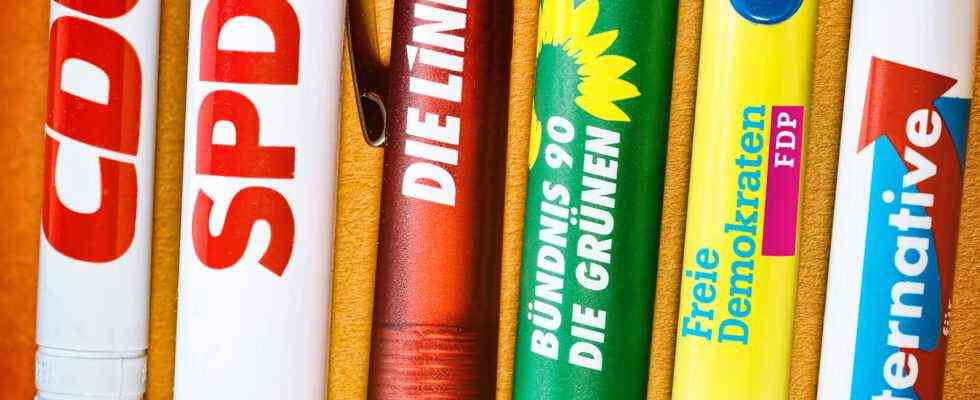overview
As of: 08/12/2021 6:46 p.m.
Climate protection, pensions, taxes and corona debts: What positions will the parties take in the federal elections? Where are the biggest differences? tagesschau.de compares the programs of the CDU, CSU, SPD, AfD, FDP, Left Party and Greens.
54 parties can run for the Bundestag election on September 26th. What they stand for and what they want to achieve is in their programs. In the past few weeks, some have also presented an extra election program. Sometimes it is called “government program”, sometimes “future program”. Some are brief, others present their positions and goals on more than 200 pages. But all of them want to convince and win the votes of the voters.
Who wants what? The parties to family policy
Kerstin Palzer, ARD Berlin, daily topics 10:15 p.m., August 12, 2021
tagesschau.de compares the election programs of CDU / CSU, SPD, AfD, FDP, Die Linke and Bündnis90 / Die Grünen based on 13 subject areas. A change between the policy fields is possible at any time using the menu highlighted in blue.
Considerable differences in content
The differences in the programs are sometimes considerable. For example in the Climate policy. From a purely quantitative point of view, all parties devote considerable attention to the issue, the Greens, unsurprisingly, the most. You also have the most ambitious plans for the goal of climate neutrality, together with the party Die Linke. Union and SPD reaffirm the already decided schedule, the FDP wants to give the country more time. For the AfD, climate neutrality is not a goal at all. The statements – or non-statements – of the parties about the CO2 price, its level and who should pay it are also revealing. Positions on the speed limit, on the other hand, are not very explicit.
Election programs in comparison
Positions of the parties by topic
Also in the Tax policy there are big differences. There is hardly a lot of money to distribute, the corona crisis and the flood damage have torn large holes in public finances. So burden the wealthy more, as the SPD, Greens and Left Party want? Or rely on the economy, like the Union and FDP? They reject tax increases. The liberals promise concrete cuts. The Union also wants relief as soon as there is financial leeway for this, as it notes in its introduction to the election manifesto. The CSU formulates more aggressively in its own program – and sets conditions.
Or the pension. Work longer, “citizens’ insurance” for everyone, or should the system be changed more in the direction of funded old-age provision? Here, too, the parties’ proposals diverge widely. The situation is similar when it comes to education or security.
What the parties are betting on in the 2021 election campaign
Anja Köhler, ARD Berlin, Morgenmagazin, 6/8/2021
Why these parties?
This detailed program comparison includes all parties that are currently represented in the German Bundestag. The most important parties are thus taken into account here. This very deliberate selection was also made in order to make this program comparison clear. The basis of the comparison are the election programs of the CDU / CSU, SPD, AfD, FDP, Die Linke and Bündnis90 / Die Grünen for the federal election in 2021.
The other parties that stand for the Bundestag election are tagesschau.de soon also before. Their concepts and goals are presented in a separate program comparison. If you just want to get a quick overview of which parties are running for election this time, you will find at tagesschau.de shortly a compact overview with the complete programs.
Why this choice of topics?
The election programs of the Bundestag parties are of different lengths, differently structured and have different priorities. For the program comparison, topics were therefore selected that play a role in all parties. Comparative statements are possible here. In addition, there are topics that are discussed in the current debate and in the election campaign, such as climate protection, health, pensions or education policy – or the main topic of digitization, which runs through most of the election programs.

